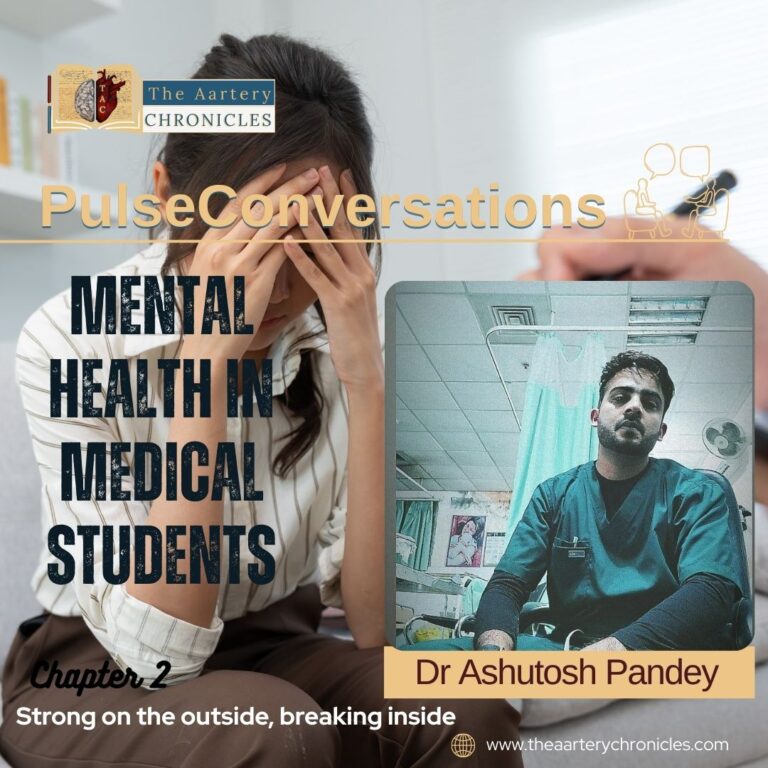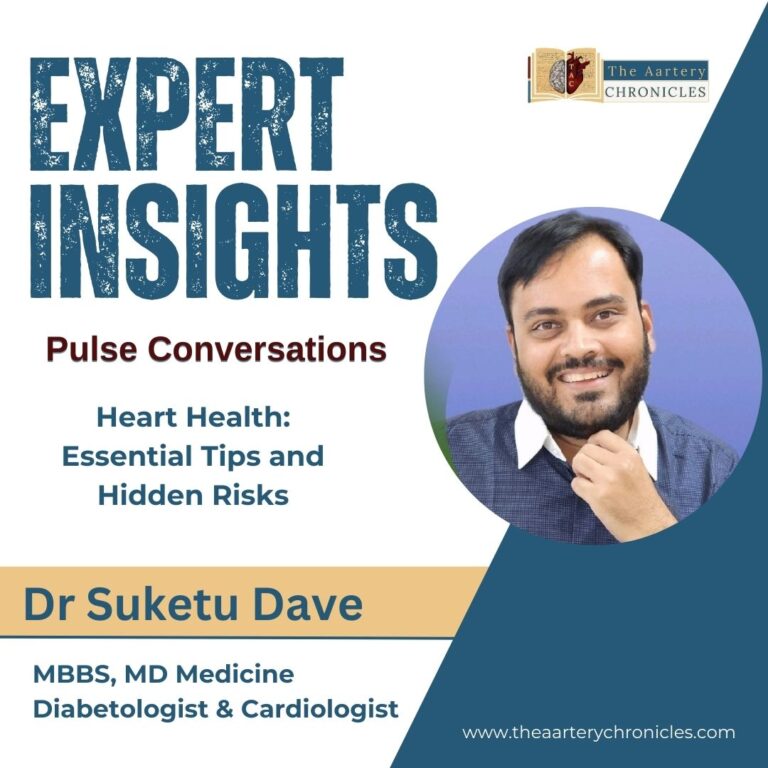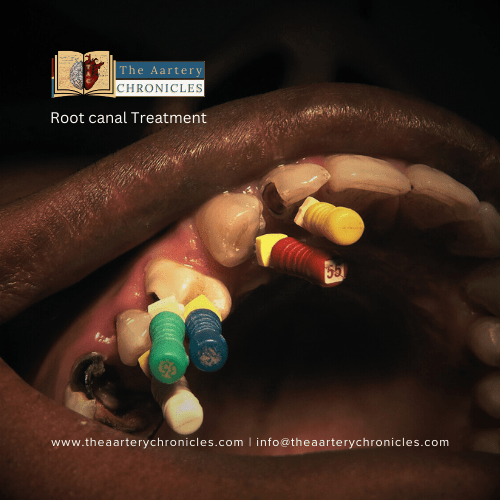

CML to CKD & HMPV: Expert Q&A with Real Case Insights
This expert discussion with Dr. Suketu Dave, moderated by Dr. Darshit Patel and Anjali Singh from “The aartery chronicles“, explores a rare case of fatigue-linked Chronic Myeloid Leukaemia (CML), and covers practical insights on chronic kidney disease (CKD), Acute kidney Injury (AKI) prevention, secondary hyperparathyroidism, hydronephrosis, calcium/vitamin D dosing, and HMPV (Human Metapneumovirus). Through real-life examples, it emphasizes timely diagnosis, correct lab interpretation, lifestyle advice, and the importance of patient awareness in preventing long-term complications.
Case Insight by Dr. Suketu Dave
One important diagnosis I’d like to share from personal practice:
A 62-year-old female with no history of diabetes, hypertension, or other significant illness presented with severe fatigue lasting 2–3 months. On examination, I found pallor and massive splenomegaly. Her CBC showed:
- Hemoglobin: ~10 g/dL
- Platelets: Normal
- WBC count: Very high
I suspected Chronic Myeloid Leukemia (CML) and ordered a Philadelphia chromosome (BCR-ABL1) test and RT-PCR, which confirmed the diagnosis. We started her on Imatinib (a tyrosine kinase inhibitor), and she improved
“Fatigue in older adults must be evaluated thoroughly. Always palpate the abdomen. CML is common in the elderly and treatable if caught early, much like diabetes or hypertension.”
Dr Suketu Dave Tweet
Q&A on CKD, AKI, and Bone Health
Dr Darshit Partel: Sir, how do elevated PTH levels affect patients with CKD, and what is the correct approach to manage calcium-phosphate imbalance?
Dr Suketu Dave: Most people are not aware of the difference between acute kidney injury (AKI) and chronic kidney disease (CKD) and often assume it’s CKD from the beginning. But we know that many kidney issues are reversible, especially in the early stages.
Now, coming to your question about parathyroid hormone (PTH), the first thing that usually gets deranged in CKD is the PTH level, and this typically starts from stage 2 CKD onwards. In this context, it is called secondary hyperparathyroidism, which is commonly caused by CKD itself, not primary hyperparathyroidism.
In such cases, you will observe:
- Very high PTH levels
- Lower (but not necessarily low) calcium
- Elevated phosphate levels
This imbalance happens because, as kidney function declines, the conversion of vitamin D into its active form is impaired (due to deficiency of 1-alpha-hydroxylase). This, in turn, affects calcium absorption and causes phosphate retention.
To manage this:
- I routinely prescribe calcium supplements
- I also prescribe active vitamin D, not the regular cholecalciferol.
The required form is Calcitriol in doses of 25 to 0.5 micrograms per day - If the calcium-phosphate product is very high, I start phosphate binders like Sevelamer to reduce phosphate absorption from the gut
- I also recommend reducing dairy intake in such cases
Let me emphasize that calcium metabolism in CKD is a double-edged sword.
We need to keep PTH elevated to some extent, but not too high. On the other hand, if PTH is overly suppressed (brought back to the “normal” range), it can lead to adynamic bone disease, which is equally problematic.
"Calcium metabolism in CKD is a double-edged sword. Balance is key," warns Dr. Dave.
So, my approach is to:
- Prevent calcium from falling too low
- Avoid phosphate from rising too high
- Maintain PTH in a functional range, without aiming to normalise it completely
And yes, once biochemical values are stabilised, I check PTH every 6 months. Everything depends on the individual patient’s condition and disease progression
Dr Darshit Patel: What imaging studies are recommended to evaluate bone health in CKD patients?
Dr. Suketu Dave: In patients with chronic kidney disease (CKD) who develop bone-related complications, the underlying cause is often secondary hyperparathyroidism, which leads to secondary osteoporosis.
In terms of imaging, Bone Mineral Density (BMD) is usually sufficient to assess bone health. However, in my practice, I rarely find the need to order BMD scans for CKD patients. Instead, I focus on monitoring the patient’s
- Serum calcium
- Phosphate
- intact PTH (iPTH) levels
If these biochemical parameters are within the therapeutic range, further imaging is often not necessary. I recommend testing calcium, phosphate, and iPTH every six months to keep the bone metabolism under control in stable CKD patients.
Dr Darshit Patel: What are three key measures that can help prevent Acute Kidney Injury (AKI), especially in the younger population?
Dr. Suketu Dave: Yes, here are the three most important preventive steps:
- Stay well-hydrated: Dehydration is a major cause of AKI, particularly in young people who may ignore fluid intake during exercise or illness.
- Avoid nephrotoxic drugs: Over-the-counter painkillers, antibiotics, and other nephrotoxic medications should be avoided unless prescribed by a qualified physician or nephrologist, and always with proper hydration.
- Exercise regularly and manage diet: Regular physical activity helps prevent diabetes and hypertension, both of which are leading causes of CKD and can also present as AKI (e.g., in cases of malignant hypertension). Diet also matters; stone-forming foods should be limited in those prone to kidney stones, as stones can trigger both AKI and CKD
"Hydration, diet, and exercise are simple yet powerful tools for kidney health, especially in preventing both AKI and long-term CKD in young individuals."
Dr Suketu Dave Tweet
Acute kidney injury occurs when the kidneys suddenly lose their ability to filter waste from the blood. Therefore, the concentration of waste products can become hazardous and the chemical composition of the blood can be impaired.
Q&A on Calcium and Vitamin D Supplementation
Dr. Darshit Patel: One of the most frequent questions we receive in clinical practice is about calcium dosing. With people increasingly self-medicating, what is the recommended calcium intake for a healthy adult per week?
Dr. Suketu Dave: Generally, a healthy adult requires approximately 1000–1200 mg of calcium per day. This totals roughly 7,000–8,400 mg per week. However, if someone is consuming a balanced diet rich in dairy and gets adequate sunlight, a 500 mg calcium tablet daily is usually sufficient.
Importantly, vitamin D levels determine how much calcium your body can absorb. Here’s a quick guide:
- <20 ng/mL – Severe deficiency
- 20–50 ng/mL – Mild deficiency
- 50–100 ng/mL – Ideal range
- >100 ng/mL – Risk of toxicity (can harm kidneys, muscles, and bones)
We recommend testing serum vitamin D3 (25-OH-D) levels before starting supplementation.
If levels are low:
- Take 60,000 IU of vitamin D3 per week (capsule or pouch) for 8 weeks
- Recheck levels afterwards and adjust the dose accordingly
Also, vitamin D can be obtained naturally from dairy and poultry products.
Dr. Darshit Patel: And what about strict vegetarians or vegans who don’t consume dairy or paneer?
Dr. Suketu Dave: For vegans, the best natural source of vitamin D is sunlight. I advise:
At least one hour of sun exposure between 10 AM to 1 PM, ideally with maximum skin exposed
If sunlight exposure isn’t possible, then supplementation becomes necessary, but again, only after confirming deficiency through blood tests.
Q&A on Hydronephrosis

Dr. Anjali Singh: Sir, could you elaborate on hydronephrosis and what are the causes of this condition?
Dr Suketu Dave: Yes, hydronephrosis simply means dilation of the renal pelvis and calyces, the drainage part of the kidney, without infection. It’s what we call aseptic dilatation. Now, this happens when there is some obstruction in the urinary tract, anywhere from the renal pelvis, ureter, bladder, or urethra.
It can be unilateral or bilateral, depending on the site of the block.
Causes of Hydronephrosis. Let me break it down:
- In children, congenital causes are common. There may be narrowing of the renal pelvis, or more accurately, as we refer to it in this context, Pelvi-Ureteric Junction (PUJ) obstruction.
- In adults, the most common cause is stone disease. A large stone may pass into the ureter and get stuck, especially at the vesico-ureteric junction or bladder. The urine backs up and stretches the kidney; this is how hydronephrosis develops.
Other causes include:
- Tumours like cervical cancer in females or bladder cancer they compress the ureter.
- BPH (Benign Prostatic Hyperplasia) in elderly males blocks the urine outflow.
- Urethral strictures, pelvic masses, or even surgical errors, like accidental ligation of the ureter during abdominal surgery.
- IgG4-related retroperitoneal fibrosis can also cause this by compressing the ureter.
If left untreated, hydronephrosis leads to pressure damage. The kidney becomes shrunken, and the patient ends up with chronic kidney disease. If infection sets in, it progresses to pyonephrosis, which is an emergency; it can cause severe sepsis or septic shock.
Many patients take Ayurvedic or homoeopathic medicine for stones. They avoid surgery even with large stones, and by the time they come to us, the kidney is already damaged. So any hydronephrosis more than mild must be treated early, especially if symptomatic.
Dr. Anjali Singh: Sir, what are the typical symptoms of hydronephrosis? Also, is surgery the only treatment, or are there effective medications too?
Dr. Suketu Dave: The classical symptom is flank pain. Patients will say:
“Sir, the pain increases when the bladder is full and reduces after passing urine.”
That’s because the renal capsule stretches when the system is full of urine, and once they void, the pain reduces.
As for treatment of hydronephrosis, it depends on the cause.
- If it’s cervical cancer, and depending on the stage, chemo or radiotherapy may
- Shrink the tumour
- Relieve the pressure
For Stone
- If it’s a small stone, say <5 mm or even up to 10 mm, we try medical management:
- Hydration
- Diuretics like Hydrochlorothiazide
- Citralka syrup contains citrate and potassium, helps with diuresis and prevents recurrence
- But if the stone is large (≥15 mm), stuck at PUJ, or causing persistent symptoms and hydronephrosis, then surgical intervention is mandatory. We do ureteroscopy, remove the stone, and place a DJ stent to relieve obstruction.
In BPH cases, if there’s hydronephrosis, we go for TURP (Transurethral Resection of Prostate).
Let me be very clear here:
- The main aim is to relieve the obstruction.
- In most cases, hydronephrosis is a surgical condition, not a medical one.
You diagnose it with ultrasound (USG). If needed, go for CT-IVP or IVP to locate the obstruction.
So yes, early diagnosis and timely action are the keys to preventing irreversible kidney damage.
Q&A on HMPV (Human Metapneumovirus)
Dr. Darshit Patel: Before we wrap up, I’d like to have a brief discussion on the ongoing concern about HMPV (Human Metapneumovirus). What are the most common risk factors, and how is it different from other viruses? Is it similiar to COVID?
Dr. Suketu Dave: Yes, HMPV is a respiratory virus, quite similar to RSV (Respiratory Syncytial Virus). It primarily affects small children and leads to conditions like bronchiolitis.
But let me clarify: it’s usually not a dangerous infection. In most children, it can be easily managed with nebulization, inhaled steroids, or antivirals like ribavirin if needed. It improves well with symptomatic treatment.
Now, HMPV can also affect older adults or those with weakened immunity, such as transplant recipients or patients with chronic illnesses. But even in those groups, serious complications are rare.
"So, to answer your question directly, No, HMPV is not another COVID-19. People are unnecessarily panicking. It does not spread as aggressively, and it certainly doesn't have the same fatal potential in healthy individuals."
Dr Suketu Dave Tweet
Dr. Darshit Patel: Many people are asking whether they can get infected without symptoms...could antibodies show up without any signs?
Dr. Suketu Dave: Absolutely! Like with many viral infections, you can be asymptomatic and still develop antibodies. So yes, your serological tests may show past exposure, even if you didn’t fall sick. This is normal and not something to worry about unless you’re immunocompromised.
Dr. Darshit Patel: Finally, sir, what are the top three measures you recommend protecting against respiratory infections like HMPV?
Dr. Suketu Dave: Yes, these are basic but highly effective:
- Always cover your mouth and nose when you sneeze, use a tissue or handkerchief to prevent spread.
- Wear a proper mask, especially if you’re in crowded places or feeling unwell. It helps prevent both catching and spreading infection.
- Frequent handwashing is essential. Use soap and water or alcohol-based sanitizers
"Additionally, I always recommend a high-protein, nutritious diet. Good nutrition boosts immunity and keeps your body prepared to fight off respiratory infections."
Dr Suketu Dave Tweet
Conclusion
This insightful Q&A highlights how a simple symptom like fatigue can reveal serious conditions like CML. From secondary hyperparathyroidism in CKD to the urgency in treating hydronephrosis, and rational supplementation of calcium and vitamin D, the discussion emphasizes early diagnosis, lifestyle management, and clinical vigilance. Whether it’s preventing AKI, balancing mineral metabolism, or controlling HMPV spread, informed choices lead to better outcomes.
Dr Dave has been working as a consultant physician, Diabetologist, and intensivist at Kamubala Polyclinic Vadodara Gujarat. He is on the verge of completing his DM in Interventional Cardiology from the highly prestigious U. N. Mehta Institute of Cardiology and Research Centre, Ahmedabad, having secured an impressive All India Rank 5 in the DM Cardiology Entrance Examination.









